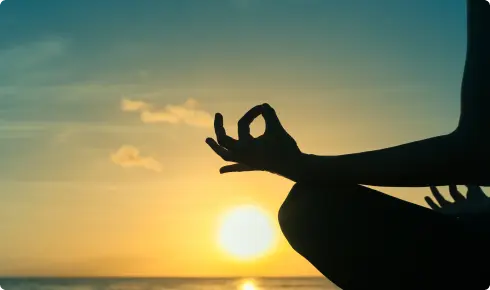Courage isn’t dramatic. It’s the quiet, repeated acts that help us lift what life puts in front of us, even when we don’t feel ready.
KEY POINTS
- Courage isn’t a fixed trait; it’s a muscle that strengthens with practice.
- You don’t need to feel brave to be brave; action comes first, feeling follows.
- Everyday life offers constant opportunities for heroism.
I grew up believing courage was about heroes jumping off mountains and running into burning buildings, 300 Spartan warriors standing against the invading Persian army—the kind of thing that is celebrated in epic poems and Hollywood blockbusters.
But life has taught me something different.
Courage does not just have to look spectacular. In fact, much more often, courage lives in the everyday.
For example, in my professional journey as an entrepreneur, I’ve needed to find the courage to stay true to my vision despite the prospect of financial crisis. Or, to take an even more serious example from my personal life, I continually see courage in my son. A few years ago, at 18, he was diagnosed with multiple myeloma, a rare blood cancer that usually picks on people three times his age. Today he’s in remission and, fortunately, doing well. Still, every two weeks he goes to the infusion center for maintenance therapy. And there’s no dramatic music or inspiring speech beforehand. He just wakes up, gets ready, and goes. He does what needs to be done, and carries on—quietly, relentlessly—like it’s the most ordinary thing in the world.
Because for him, it is.
We all have a variety of things in our personal and professional lives that require courage. We may need to find the courage to disagree with our boss, or we may need it to show up to therapy every week. But whatever we need it for, life has made one thing clear to me: If we want to not just survive but also to thrive in this always challenging world, we have to intentionally develop our capacity to act with courage.
The Courage Muscle
I’ve written before about hope, and how it is not simply a feeling but also an action; it is a choice to step forward even when the future is uncertain. Courage is what helps us take that step.
We often talk about courage like it is a fixed property, something that people either have or do not have: “She’s brave, he’s not brave.” But my son has shown me something different, something that fills me with hope.
Everyday, my son practices courage. Sometimes it’s easier than other times, but regardless, whatever it feels like, no matter how tired or terrified he is, every two weeks, he shows up htois cancer treatment.
And through that consistent repetition, something has shifted. It isn’t that it’s become consistently easier, because it hasn’t. Rather, it’s that he has learned he can be brave and do hard things. Showing up once meant he could show up again.
Courage is a muscle. And like any muscle, it gets stronger with use.
Building the Courage Muscle
The world’s strongest person can lift more than 1,100 pounds in a deadlift. Now, I don’t know Mr. Björnsson, but I bet he didn’t begin his strongman journey being able to lift that weight.
But that was not a problem, because he didn’t need to lift 1,100 pounds at the start of his journey. He just needed to lift the weight in front of him. Over time, the weight that was in front of him got heavier. But it was still all that he needed to do: lift the weight in front of him.
Mr. Björnsson’s journey teaches us that the next step is always smaller than we think. And so it is with courage: Small acts of courage build the capacity for larger ones. Not because you suddenly become a different person but because you’ve proven to yourself that you can take a step, and then another, and then another.
When we practice courage in small increments, we develop the courage muscle, and we develop belief in our ability to be brave. And over time, that translates into growth; the things that we are too scared to do today become the things we are brave enough to do next month.
5 Ways to Practice Daily Courage
If courage is a practice, then we need practical ways to build it. Here are five approaches I’ve learned, both from watching my son and from my own struggles to take the next step:
1. Name the Next Step, Not the Mountain. Don’t ask “How do I get through this entire ordeal?” Ask “What’s the one thing I need to do next?” My son doesn’t think about the next six months of treatment. He thinks about today’s appointment. Tomorrow can wait.
2. Recognize Your Own Courage. Start noticing when you do hard things. Said something difficult? That took courage. Showed up when you wanted to hide? Courage. Asked for help? Courage. We don’t build the muscle if we don’t acknowledge we’re using it.
3. Borrow Courage from Others. Watch for courage in the people around you. Let it inspire you, remind you what’s possible. My son’s courage doesn’t just sustain him; it sustains our whole family. We witness his bravery and remember we can be brave, too.
4. Separate Courage from Feeling Ready. You will almost never feel ready. Waiting to feel brave guarantees you’ll wait forever. The equation is simpler: Do you need to take this step? Then take it. The feeling follows the action, not the other way around.
5. Rest Between Acts of Courage. Courage is exhausting. My son doesn’t go to treatment every day; he goes every two weeks, and he goes about his life in between. Honor that you can’t be courageous every moment. Recovery is part of the practice.
We Are All Called
Courage is something we associate with heroes. And I still think that’s true. Courage is heroic. What I’ve learned, though, is that heroism is not just the province of the spectacular. It lives also in the everyday, in normal lives and normal jobs; you could say that my son has taught me that there are heroes everywhere.
But he’s also raised a challenge. You see, if ordinary life gives us opportunities for heroism, then what that means is that everyday, we are also called to be heroes.
We don’t get to choose how the call comes. My son didn’t choose to face cancer and fortnightly treatments. But he does get to choose how he responds to the call: one appointment at a time, one step at a time, building the muscle of courage through practice and repetition.
We each have that same choice.
The weight in front of us may be different, but the principle is the same: Lift what’s there, rest, and show up again.
Will we lift the weight?
Will you answer the call?
[Photo: Source: Best/Abobe Stock]
Original article @ Psychology Today.
















